The graphic design of predatory papers
Published in Healthcare & Nursing, Astronomy, and Social Sciences

The ultimate medium of scientific communication is a paper in a refereed journal. (Saffran, 1987)
Most researchers are evaluated primarily on their scholarly output, which is often measured by the number of publications they produce. Anyone even marginally engaged in academia is familiar with the challenge: conducting sound research, preparing a manuscript, navigating the submission process, undergoing peer review, and revising a paper are all demanding tasks that consume considerable time and effort. Time, however, is a resource that some scholars either do not have, or are unwilling – or unable – to invest.
A wide range of dubious business models exploit this structural problem. Thousands of self-proclaimed ‘academic journals’ have emerged that apply only minimal – or entirely absent –quality assurance procedures, provided that authors are willing to pay. In practice, the publishers of such outlets exploit the need (and often the ignorance or unawareness) of researchers by offering guaranteed publication regardless of quality. At the same time, these journals claim on their websites that submitted manuscripts are subject to peer review. Within academic discourse, this practice is referred to as predatory publishing.
The strange design of predatory publishing
For our research we examined a large number of predatory journals. One striking observation was that their published articles looked ‘off’ even at first glance. With experience in academia, one develops an intuitive sense that something about these documents is not quite right.
The ‘Uncanny Valley’
The underlying reason for this phenomenon is straightforward: predatory publishers are primarily motivated by financial gain. Consequently, they show little interest in branding, design, or even minimal standards of aesthetics and layout. On the contrary, investing in professional design incurs costs. Nevertheless, the publications must at least superficially resemble those issued by reputable publishers. The result is that most papers look as though they were hastily assembled with standard office software. While more design effort is evident than in a plain Word or LibreOffice template, the outcome still lacks the refinement of professional typesetting.
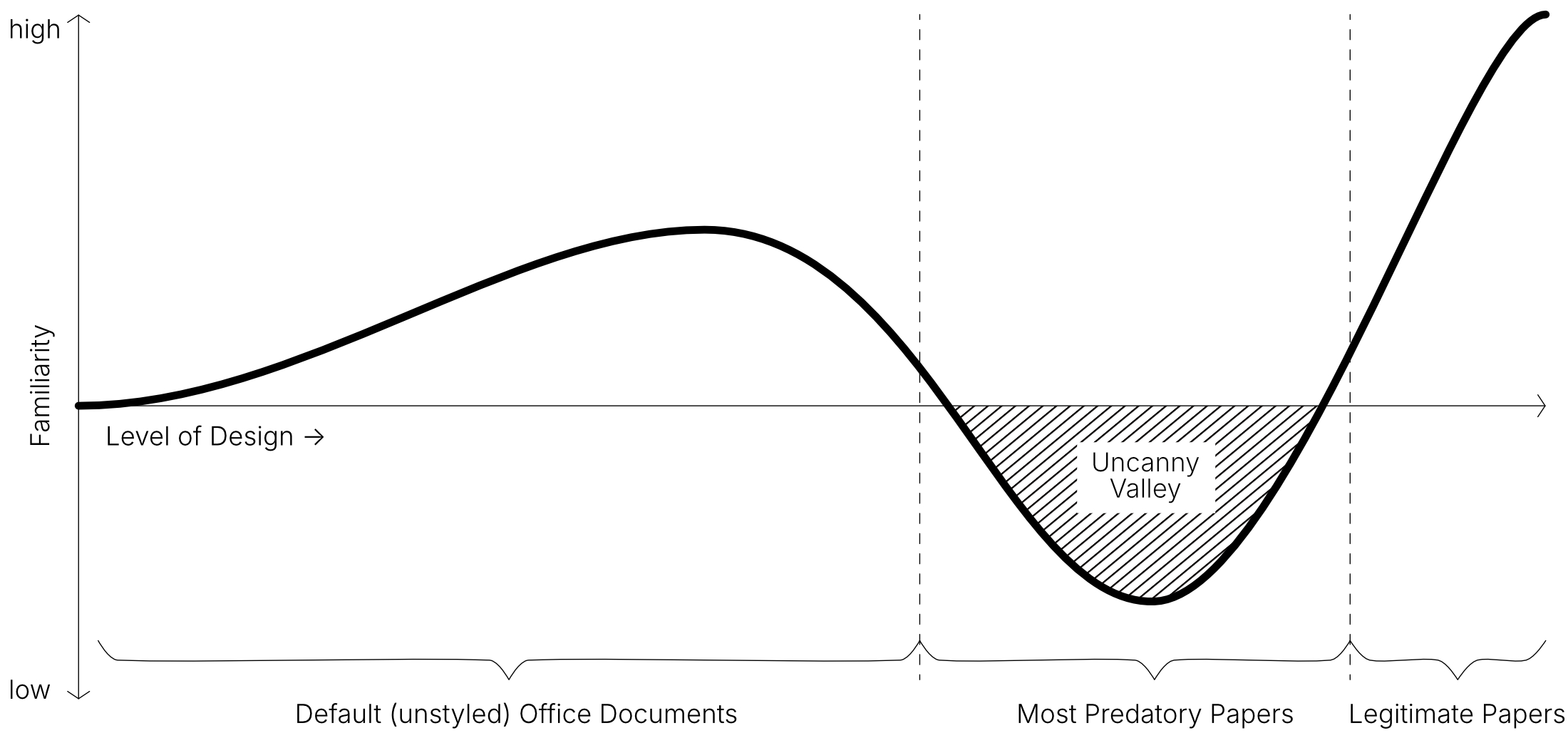
This situation recalls the concept of the Uncanny Valley in computer graphics, which suggests that the more closely a (3D) model approximates a human, the more unsettling it becomes – until it eventually becomes indistinguishable from a real human being, at which point the sense of uncanniness disappears. Predatory papers occupy a similar space: they feature ‘more design’ than rudimentary office documents, yet appear less polished than articles produced by established publishers, and therefore may appear ‘uncanny’.
Selected Findings from the Study
In our research, we compared 443 legitimate (i.e., reputable) with 555 potentially predatory publications. Several key patterns emerged:
-
On average, articles from predatory journals are significantly shorter than those from reputable outlets, both in character count and in page length.
-
Established journals employ greater typographic variation (e.g., italics, boldface) and a wider range of font sizes.
-
Standard fonts such as Arial, Times New Roman, Calibri, or Cambria are used far less frequently in reputable journals.
-
PDF metadata show that predatory journals rely much more heavily on standard office software to generate their documents.
-
Predatory journals include significantly fewer figures and graphics than legitimate publications.
-
Title pages of reputable journals are comparatively uniform, while those of predatory journals display greater inconsistency.
Predatory Mimicry
During the study, we also observed that some predatory journals attempt to imitate the design of established publishers. In particular, layouts resembling those of Elsevier and Springer Open appeared frequently. This further illustrates the Uncanny Valley effect: while the imitation may seem plausible at first glance, experienced researchers can quickly detect its inadequacy – often due to the lack of professional tools and production standards available to predatory publishers.
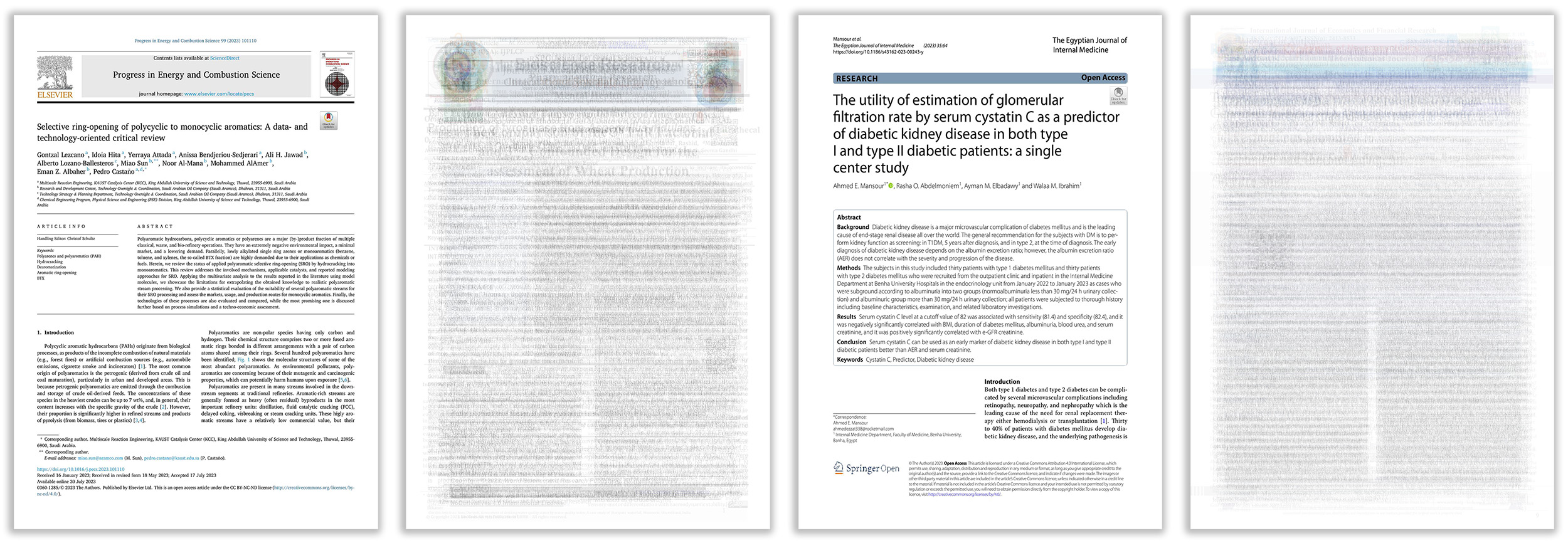
Conclusion
Predatory publishing continues to pose a significant challenge for scholarly communication. Although the findings of our study should not be regarded as a definitive basis for decision-making, we hope they will contribute to raising awareness of this problematic practice. Such awareness is crucial to prevent (early-career) researchers from being exploited by predatory outlets.
Follow the Topic
-
Scientometrics

This is an international, peer-reviewed, monthly journal that publishes original research on all quantitative aspects of the production, communication, and use of scientific and technological information.
Related Collections
With Collections, you can get published faster and increase your visibility.
Framework for the Responsible use of Assessments and Metrics in Evaluation (FRAME)
Dear Contributor to the Special Track “Framework for the Responsible use of Assessments and Metrics in Evaluation (FRAME)”,
This is to inform you that the organisers of the Special Track FRAME at the 20th International Conference on Scientometrics and Informetrics (ISSI2025) and the Editors of the journal Scientometrics have agreed on the publication of extended versions of presented at this Specia Track in a dedicated issue of Scientometrics. The special issue will be edited by Cinzia Daraio, Wolfgang Glänzel, and Juan Gorraiz.
Invited authors of FRAME contributions as well as invited researchers who previously indicated their interest in contributing to the special track but could not manage to submit their manuscripts in time are asked to submit their manuscripts no later than 15 November 2025 to the Editorial Manager of the journal. The manuscript should be a substantially extended version of their contribution (at least 25% new material), if already published in the conference proceedings. Note that above-mentioned deadline is stringent. After this date, the special issue will be closed.
Authors are asked to organise their manuscript according to the guidelines for contributors as described on the journal’s homepage and in each print issue of the journal. Depending on the selected papers’ length, the issue will admit a selection of about 30 contributions. Therefore, submitted papers should ideally not exceed 15–20 pages (including tables and figures).
In order to submit your manuscript
1. Open the Editorial Manager of the journal Scientometrics and login as author: https://www.editorialmanager.com/scim/default.aspx. If you do not yet have a username and password, please, register first.
2. Click on “Submit New Manuscript”.
3. Choose “Article type”: ‘S.I.: FRAME’. This is important since your paper will otherwise be reviewed as an ‘ordinary’ paper and, in case of acceptance, be published in a regular issue.
4. When you complete the online form, and you are asked “Have you submitted your manuscript elsewhere?” click on “yes” and mention that a previous version is part of the Proceedings of the ‘20th International Society of Scientometrics and Informetrics Conference (ISSI 2025)’. Authors of papers not presented in the special track should skip this declaration.
5. From this point on, submit your paper as you usually do.
Publishing Model: Hybrid
Deadline: Jan 31, 2026
Large Language Models for Scientometrics (LLM4SCIM)
The launch of the special issue Artificial Intelligence for Scientometrics (AI4SCIM) has received great attention from the broad scientometrics community, with nearly 150 submissions and across a wide range of interests in AI-empowered methodological development for scientometrics studies, communications and understandings of AI’s broad impacts in scientometrics, etc. While we have foreseen the deep enagegemnt of large language models (LLMs) with broad scientometrics tasks, as well as its revolutionary influence on transforming the working patterns and thinking paradigms of the community, submissions to the AI4SCIM special issue demonstrate a dominant use of LLMs, indicating the scientometrics community’s much more enhanced interactions with AI, particularly, LLMs. Impressive practices include utilising LLMs as an effective tool for entity extraction, topic identification, summarisation, etc., examining and comparing the performance of different large and small language models in specific scientometrics tasks (e.g., classification), and developing LLM-empowered methods for deep literature analysis.
These endeavours inspire us to launch the second special issue on the trail, highlighting LLMs for Scientometrics (LLM4SCIM). This special issue further urges the scientometrics community to leverage the great opportunities introduced by LLMs to enhance our understanding, utilisation, development, and regulation in this AI-driven revolution. We particularly highlight the following challenges:
These endeavours inspire us to launch the second special issue on the trail, highlighting LLMs for Scientometrics (LLM4SCIM). This special issue further urges the scientometrics community to leverage the great opportunities introduced by LLMs to enhance our understanding, utilisation, development, and regulation in this AI-driven revolution. We particularly highlight the following challenges:
DESIGN: How can we create a comprehensive research framework to incorporate LLMs for designing scientometric research?
COMMUNICATION: How can we responsibly integrate LLMs with human knowledge for conducting scientometric studies (e.g., LLM-aided academic writing and publishing in the context of scientometrics, and LLM-supported metrics research and evaluative research)?
TOOLS: How can we develop LLM-empowered analytical tools for broad scientometric studies (e.g., deep literature analysis using LLMs, and LLMs as part of new scientometric tools)?
This special issue calls on the scientometrics community to publish high-quality research on broad topics of LLMs for scientometrics, including fundamental theories, conceptual understandings, novel methodological developments, and practical applications that address urgent scientometric needs.
Topics
LLMs for research evaluation (including peer review/expert opinion and their evaluation, etc.)
LLMs for metrics development (including cognitive link analysis, citation context analysis, sentiment analysis, etc.)
LLMs for literature-based analysis (including entity extraction, knowledge graphs, full-text content analysis, etc.)
LLMs for scientific information retrieval and access (including academic GPTs, retrieval-augmented generation, etc.)
LLMs for patentometrics, technometrics, and altmetrics
LLM-empowered prediction models for scientometrics, e.g., predicting research trends, impact, quality, etc., and technological forecasting
LLMs for research communication, e.g., publishing, scientific writing, qualitative approaches (e.g., academic surveys), and data reporting and visualisation
LLMs as part of new scientometric tools
Ethics regarding LLMs for scientometrics, e.g., biases, transparency, and the impact of AI-generated content on scientometric research.
How to submit your manuscript?
1. Open the journal’s Editorial Manager () and login as author. If you do not yet have a username and password, please, register first.
2. Click on “Submit New Manuscript”.
3. Choose “Article type”: ‘S.I.: LLM4SCIM’. This is important since your paper would otherwise, in case of acceptance, be published in a regular issue.
4. From this point on, submit your paper as you usually do.
Publishing Model: Hybrid
Deadline: Jan 31, 2026
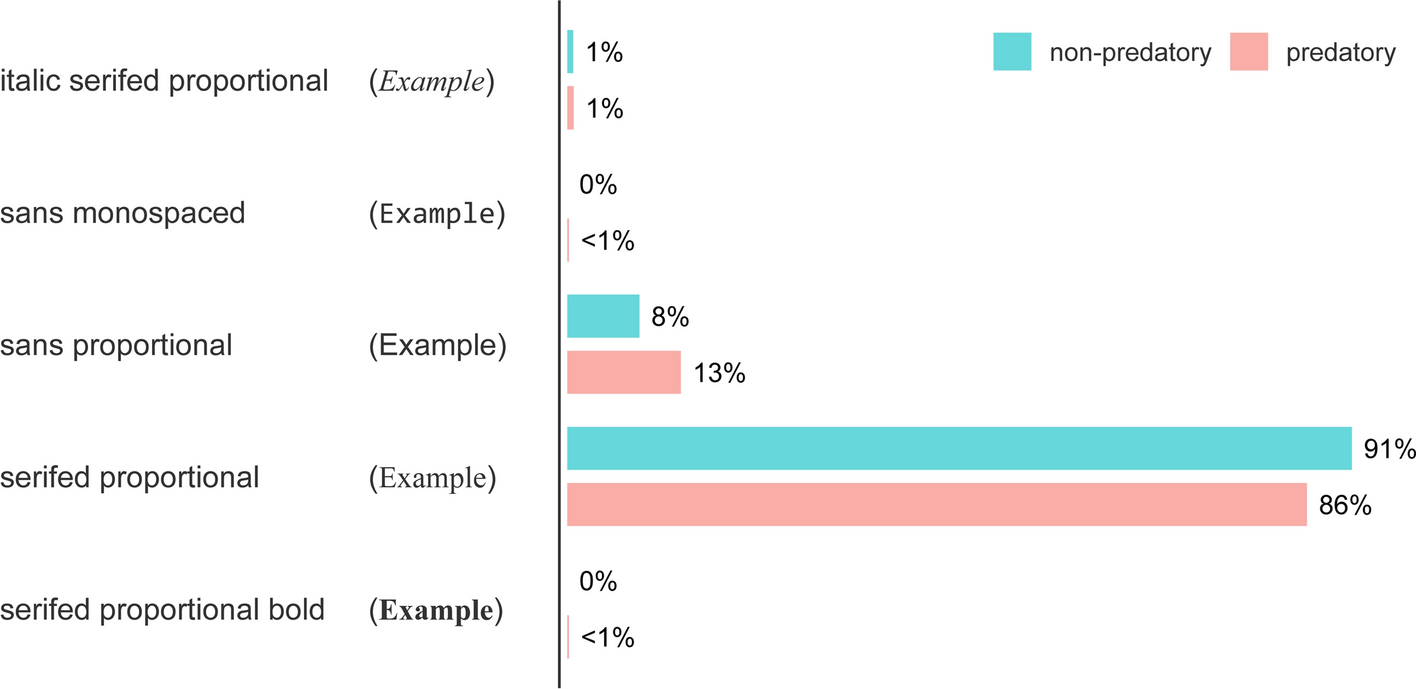

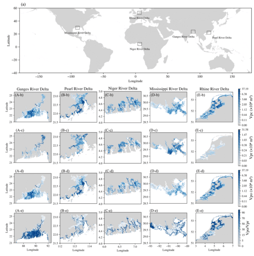
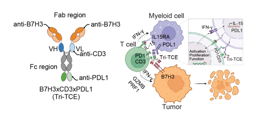

Please sign in or register for FREE
If you are a registered user on Research Communities by Springer Nature, please sign in